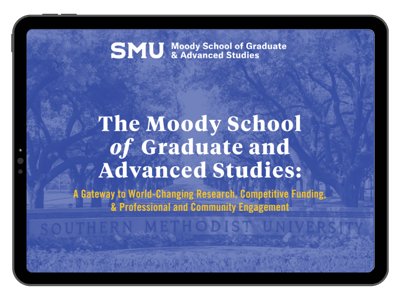- Skip to main content
- Prospective Students
- Current Students
- Apply Apply
- Follow Us


Do PhD Students Pay Tuition? Unpacking the Cost of a PhD

Choosing to pursue a PhD is a major milestone, but it comes with a host of concerns and questions. As a prospective doctoral student, you might wonder if you pay tuition for a PhD and how much that will cost.
In many cases, the answer is no, PhD students do not pay tuition. Instead, universities often provide their doctoral students with tuition waivers and funding packages to carry them through their years of study.
However, it's important to bear in mind that this isn't always the case and the specifics can vary greatly. Navigating PhD funding can seem daunting at first, but understanding how tuition, stipends and other sources affect the out-of-pocket cost of a PhD can help you feel more confident in your decision.
How Much Does a PhD Cost?
Contrary to popular belief, the costs of a PhD program aren't set in stone. Factors like the institution, geographic location, field of study and funding support all play a role in how much you’ll actually pay for a doctoral program. Depending on your field, some PhD programs pay you .
To give you a clearer picture, let's break down expenses and potential support.
Tuition and Fees
Tuition and fees are typically the most substantial expense. How much you pay depends on the institution offering the program and the field of study you choose. According to the Education Data Initiative , the average cost of a PhD specifically is $106,860, while the average cost of a doctorate degree in general is higher at $150,835.
You can expect a lower cost at public institutions ($93,670 on average) compared to private universities ($129,395 on average). Considering the time to complete a doctorate degree ranges from approximately 4 to 8 years, the duration of your studies can influence the total price.
While figures like this seem substantial, it's important to remember that scholarships, grants, fellowships and assistantships significantly reduce the out-of-pocket expenses for most PhD students. For instance, the average grant aid for a doctoral degree is $16,502 annually, and 21.4% of PhD students surveyed by the Education Data Initiative offset their costs with teaching assistantships.
As a result, actual paid expenses are often much lower than the listed tuition and fees.
Books and Materials
The cost of study materials, including textbooks and research supplies, varies depending on the specific requirements of your field of study.
For example, PhD students in Earth Sciences or Chemistry might need to invest in lab equipment and materials, while students in Humanities may require numerous books and subscriptions to academic journals.
However, it's essential to note that many programs provide funding resources that help offset or eliminate these costs. Universities often offer subsidies or funds for research materials, and there are numerous grants and scholarships specific to different fields of study. Libraries and interlibrary loan systems can also be a valuable resource for accessing required books and academic journals.
Healthcare and Living
Cost of living and healthcare can vary greatly depending on your circumstances and location. Major cities, for example, tend to have higher living costs than smaller towns or rural areas.
The higher expenses in cities often correlate with increased access to resources, research opportunities and a wide variety of entertainment and lifestyle choices. On the other hand, smaller towns or rural areas might offer lower cost of living and fewer distractions but may limit access to extensive resources or opportunities.
Luckily, many universities offer annual stipends as part of their financial aid packages for PhD students. These stipends are designed to help you manage your living and healthcare expenses, allowing you to concentrate on your studies and research. Some universities may also provide budget-friendly on-campus housing options to help mitigate overall costs.
Navigating the Financial Landscape of a PhD
The path to earning a PhD isn't just an academic journey, but a financial one too. While it's true that in many cases, PhD students don't pay tuition, it's crucial to understand that it’s ultimately variable depending on where and what you choose to study. Financial aid packages and stipends can be a substantial help, providing relief to both domestic and international students.
At the Moody School of Graduate and Advanced Studies, we pride ourselves in providing an environment that fosters academic excellence, research innovation and professional development. With the generous support of the Moody Foundation, we have expanded our funding opportunities, enabling a diverse range of talented students to become part of our community.
Our suite of financial resources, including fellowships, assistantships, and travel grants, aim to facilitate interdisciplinary collaborations and reduce financial barriers. By helping our students focus on their academic and research pursuits, we build a vibrant, diverse, and inclusive environment that sets the stage for future leaders to thrive.

learn more about
PhD funding at the Moody School.

Request more
Information.
Complete the form to reach out to us for more information
Published On
More articles, recommended articles for you, how to choose a phd program and compare offers.
You’ve been patiently waiting for your decision letters to roll in. Now you have the results, and...
How to Find PhD Scholarships and Grants
Financing your PhD studies can be challenging, but it's essential to your academic journey....
How PhD Students Get Paid
The most common questions (and biggest misconceptions) about getting a PhD revolve around money....
Browse articles by topic
Subscribe to.
How Much Does a PhD Cost?
How much does a PhD cost? Before you enroll in a doctoral program, you may have this pressing question on your mind.

The price of earning your PhD can vary greatly from one school to another, so it can help to pay close attention to the average costs at different institutions.
Editorial Listing ShortCode:
Once you have a better idea of the cost of earning this degree, you can make a plan for your doctoral studies and work toward achieving your goals.

According to the National Center for Education Statistics, the average doctoral student earning a research degree pays $16,526 in tuition per year. [1]
Plus, on average, there’s an additional $16,320 in non-tuition fees and expenses each year. That makes the average annual cost of a PhD $32,846. [1] It’s common to spend 3 to 5 years or more in a PhD program. That can seem like a staggering amount of money at first. You may be relieved to know, though, that you might not have to pay the entire amount yourself.
Many PhD candidates receive a good deal of support to help with their studies. PhD students fund their educations in a variety of ways, including:
- Fellowships
- Program-based funding
Program-based funding may include a stipend, a tuition waiver, and even benefits like health insurance. Fully funded online PhD programs are available, and in these programs, students are not responsible for covering any of the expenses associated with their doctoral education. It’s not always necessary to go into debt to pursue doctoral studies. Many students graduate from PhD programs without having incurred any debt.
One of the biggest assets that can help you graduate debt-free is an assistantship opportunity. You may be able to secure a role as a teaching or research assistant. In exchange for your work, you might receive a tuition waiver, a stipend, and other benefits.
Both the tuition at your school and the stipend you may receive will vary depending on where you enroll. To learn more about Ivy League costs, you can review the following table.
- Brown University: Tuition , stipends
- Columbia University: Tuition , stipends
- Cornell University: Tuition , stipends
- Dartmouth College: Tuition , stipends
- Harvard University: Tuition , stipends ( Engineering & Biological Sciences )
- Princeton University: Tuition, stipends
- University of Pennsylvania: Tuition , stipends
- Yale University: Tuition , stipends
This chart will give you an idea of typical PhD expenses at some of the top public universities.
- University of Arizona: Tuition , stipends
- Florida International University: Tuition , stipends ( Business & Bridge to the Doctorate Fellowship Program )
- Georgia State University: Tuition , stipends
- Ohio State: Tuition , stipends
- Texas A&M: Tuition , stipends ( Chemistry & Chemical Engineering )
- University of Central Florida: Tuition , stipends
- University of Florida: Tuition , stipends ( Engineering & English )
- University of Illinois: Tuition , stipends ( Math & Communication )
- University of Minnesota: Tuition , stipends ( Management & Public Health )
- University of Texas: Tuition , stipends ( Computer Science & Biology )
These rates reflect general tuition and stipends at the above schools, but the rates may vary somewhat depending on your program and the terms of your assistantship.
For example, you’re likely to earn more for a half-time assistantship than for a quarter-time one, and you’re likely to earn more for a 12-month assignment than for a 9-month one.
Factors That Affect the Average Cost of a Doctorate Degree

Many different elements will play into the overall price of earning your degree. One major factor is the type of school you attend. The following figures are based on data from the Urban Institute. [4]
Choice of School
- Private for-profit : $13,520 average annual tuition
- Private nonprofit : $25,160 average annual tuition
- Public in-state : $11,000 average annual tuition
- Public out-of-state : $22,590 average annual tuition
How long it takes to earn your degree can make a difference as well. The National Science Foundation offers data on how long PhD students in various fields are often in school. [5]
Program Length by Field of Study
- Education : 5.7 years
- Engineering : 5.3 years
- Humanities and arts : 6.8 years
- Life sciences : 5.5 years
- Mathematics and computer sciences : 5.7 years
- Physical sciences : 5.6 years
- Psychology and social sciences : 6.0 years
Online studies may change your costs. The tuition is often similar, but on-campus residency can be more expensive than living at home. Consider, for example, the graduate housing costs at the University of Miami. [6]
Online vs. On-Campus Housing Costs
- Living on-campus : $24,120 annually
- Living with a relative : $8,664 annually
On the other hand, teaching and research assistantships are less common for online PhD programs than on-campus ones. Even with housing costs, you may, then, spend less for on-campus studies.
Professional Doctorate Degree Cost

A PhD is not the only type of doctorate. There are also professional doctorates available, such as a Doctor of Podiatry (DPM) or a Doctor of Medicine (MD).
The following data from the National Center for Education Statistics provides an overview of the average doctoral degree cost annually. [1]
- Books and materials : $1,196
- Non-tuition costs and fees : $23,745
- Tuition : $34,910
In general, professional practice doctorates are more expensive than PhDs. According to the Urban Institute, 30% of professional practice doctoral programs have published annual tuition rates of more than $30,000. [2] Only 22% of PhD programs fall into that price category.
It’s also worth noting that doctoral students in professional programs are less likely to receive stipends, tuition waivers, and other benefits that often make school more affordable for PhD students.
Paying for a PhD

There are many ways to handle your PhD program cost. Perhaps you have the means to pay for your schooling on your own. If not, you may benefit from an assistantship, federal student aid, or the financial support of your workplace.
According to the National Science Foundation, the majority of students fund their PhDs through assistantships. [7] Further NSF data about primary funding sources is listed here.
Also, data from the National Center for Education Statistics shows that students earning research doctorates took out, on average, $20,500 in loans. [3]
Graduate students may be eligible for Direct Unsubsidized Loans and Federal Direct PLUS Loans.
Student Loan Debt of PhD Graduates

When it comes to the cost of a PhD, what you study can be as important as any of the other factors. As a general rule, people who get research doctoral degrees in education are much more likely to graduate with debt than other doctoral students.
The following data from the Urban Institute supports this idea. [8]
According to the National Center for Education Statistics, the average non-education PhD graduate had a loan balance of $98,800. [9] For those with degrees in education, the average balance was $111,900.
If you are interested in a degree in education, you may want to pay particular attention to the tuition costs and benefits available at the schools you’re considering.
Is a PhD Degree Worth It?

Yes, a PhD degree is worth it for many students. The Bureau of Labor Statistics states that unemployment rates are quite low among people with doctoral degrees. The overall American unemployment rate is 4.7%.
Among people with doctorates, the unemployment rate is only 1.5%. [10] Plus, a PhD can put you on the path toward a research role or a tenured career in academia. In addition, it is an impressive personal accomplishment.
If you’re considering pursuing a terminal degree, then you’ve probably been wondering, “How much is a PhD?” Now that you know, you can start your search for the accredited school that’s right for you.
[1] National Postsecondary Student Aid Study: 2016 Graduate Students (NPSAS:GR). US Department of Education. National Center for Education Statistics.
[2] Figure 3. Baum, Sandy and Patricia Steele. The Price of Graduate and Professional Schools: How Much Students Pay (PDF). Urban Institute. NCES, NPSAS 2012.
[3] Table A-8: Average amounts of selected types of financial aid received by graduate students. US Department of Education. National Center for Education Statistics.
[4] Appendix A. Baum, Sandy and Patricia Steele. The Price of Graduate and Professional School: How Much Students Pay (PDF). Urban Institute. NCES, NPSAS 2012.
[5] Table 31. Median years to doctorate, by major field of study: Selected years, 1994–2019. National Center for Science and Engineering Statistics, Survey of Earned Doctorates.
[6] 2023-2024 Estimated Graduate Cost of Attendance . University of Miami. Graduate Professional Financial Assistance.
[7] Table 35. Doctorate recipients’ primary source of financial support, by broad field of study, sex, citizenship status, ethnicity, and race: 2019. National Center for Science and Engineering Statistics, Survey of Earned Doctorates.
[8] Baum, Sandy and Patricia Steele. Graduate and Professional School Debt: How Much Students Borrow (PDF). Urban Institute. 2018.
[9] Trends in Student Loan Debt for Graduate School Completers (PDF). Spotlights. The Condition of Education 2018. National Center for Education Statistics.
[10] Earnings and unemployment rates by educational attainment, 2021 . Bureau of Labor Statistics.

- PhD Degree Funding
Harvard guarantees full financial support to PhD students—including tuition, health fees, and basic living expenses—for a minimum of five years.
- Dissertation
- Fellowships
- Maximizing Your Degree
- Before You Arrive
- First Weeks at Harvard
- Harvard Speak
- Pre-Arrival Resources for New International Students
- Alumni Council
- Student Engagement
- Applying to Degree Programs
- Applying to the Visiting Students Program
- Admissions Policies
- Cost of Attendance
- Express Interest
- Campus Safety
- Commencement
- Diversity & Inclusion Fellows
- Student Affinity Groups
- Recruitment and Outreach
- Find Your Financial Aid Officer
- Master's Degree Funding
- Federal Student Aid
- Other Sources of Support
- Financial Wellness
- Consumer Information
- Life Sciences
- Policies (Student Handbook)
- Student Center
- Title IX and Gender Equity
Harvard's financial support package is typically for the first four years of study and the completion year, using a tiered tuition structure that reduces tuition over time as students progress through their degree programs. This multiyear funding package includes a combination of tuition grants, stipends, traineeships, teaching fellowships, research assistantships, and other academic appointments. In addition, Harvard Griffin GSAS students are particularly successful in securing grants, fellowships , and other sources of external funding as part of their professional development.
The standard funding package includes:
- grant toward tuition and fees—paid in full for years 1 through 4, plus the dissertation completion year, with a partially subsidized dental plan option available
- living expense stipend during years 1 and 2
- a combination of stipend, teaching fellowships, and/or research assistantships during years 3 and 4
- if noted in your Notice of Financial Support, summer research funding following the first four academic years from Harvard Griffin GSAS or faculty grants
- stipend and/or research support during the completion year.
In some programs, the timing and structure of living expense support may vary from this pattern. For example, students in the sciences typically receive full funding until they complete their degrees.
Financial Aid
Share this page, explore events.
- Search All Scholarships
- Exclusive Scholarships
- Easy Scholarships to Apply For
- No Essay Scholarships
- Scholarships for HS Juniors
- Scholarships for HS Seniors
- Scholarships for College Students
- Scholarships for Grad Students
- Scholarships for Women
- Scholarships for Black Students
- Scholarships
- Student Loans
- College Admissions
- Financial Aid
- Scholarship Winners
- Scholarship Providers
Student-centric advice and objective recommendations
Higher education has never been more confusing or expensive. Our goal is to help you navigate the very big decisions related to higher ed with objective information and expert advice. Each piece of content on the site is original, based on extensive research, and reviewed by multiple editors, including a subject matter expert. This ensures that all of our content is up-to-date, useful, accurate, and thorough.
Our reviews and recommendations are based on extensive research, testing, and feedback. We may receive commission from links on our website, but that doesn’t affect our editors’ opinions. Our marketing partners don’t review, approve or endorse our editorial content. It’s accurate to the best of our knowledge when posted. You can find a complete list of our partners here .
How Much Does a PhD Cost?

Cece Gilmore is a Content Writer at Scholarships360. Cece earned her undergraduate degree in Journalism and Mass Communications from Arizona State University. While at ASU, she was the education editor as well as a published staff reporter at Downtown Devil. Cece was also the co-host of her own radio show on Blaze Radio ASU.
Learn about our editorial policies

Maria Geiger is Director of Content at Scholarships360. She is a former online educational technology instructor and adjunct writing instructor. In addition to education reform, Maria’s interests include viewpoint diversity, blended/flipped learning, digital communication, and integrating media/web tools into the curriculum to better facilitate student engagement. Maria earned both a B.A. and an M.A. in English Literature from Monmouth University, an M. Ed. in Education from Monmouth University, and a Virtual Online Teaching Certificate (VOLT) from the University of Pennsylvania.

Obtaining a PhD is a great way to open up your career options and fulfill personal goals. If you’re deciding whether to go back to your school for a doctorate degree, make sure to get a picture of what it will cost you beforehand so you can make an educated financial choice. In this article, we take a deep dive into how much a PhD costs, including non-tuition expenses and hidden costs. We also list the pros and cons of earning a PhD, as well as ways to fund your degree if it is the right choice for you. Let’s get started!
What is a PhD?
“PhD” is the abbreviated title for “Doctor of Philosophy.” A PhD is an academic degree that qualifies the degree holder to teach at the university level or work in specialized positions in certain fields. PhDs generally focus on STEM research and teaching fields.
Keep reading : Everything you need to know about a doctorate degree
How much does a PhD cost?
It usually takes around eight years to earn a PhD at an average tuition cost of 81,000 .
The true cost of a PhD is very dependent on the following factors:
- Choice of school
- Field of study
- Type of PhD
- Location of school
- Dollar amount of student loans
Also see: What is the average amount of graduate school debt?
Other costs associated with receiving a PhD
Living expenses .
In addition to the cost of tuition involved in earning a PhD, there are numerous outside factors that add to the total spent. These predominantly include living expenses such as housing, food, insurance, and transportation. The cost of these necessities will vary depending on the state, city of residence, and number of years it takes to earn a PhD. Therefore, it is important to consider all these factors when planning to earn a PhD.
Hidden costs of a PhD
Besides just the monetary cost of a PhD, receiving this degree has some hidden costs that can affect whether a PhD is truly worth it. Let’s look at some of the most important hidden costs.
Receiving a PhD takes a long time! If you want to earn a PhD, it will take up to eight years to do so.
Delayed opportunities
Because receiving a PhD takes time, this means there may be work and life opportunities and experiences you miss out on or have to delay.
Lost income
While focusing on earning a PhD, you will need to focus on your education rather than maintaining a steady flow of income from a job. You will most likely not be able to hold down a full-time job while completing your PhD schooling.
The chance of not finishing
Unfortunately, it is quite common to start but not earn a PhD. There are a lot of factors that hinder students from receiving their PhD, including the following:
- Realization they do not want a PhD
- Lack of ability to pay for a PhD
- Inability to maintain a school work balance
Ways to fund your PhD
Luckily, prospective PhD candidates have numerous options to help them fund their education. Typically, PhD students turn to a variety of funding sources, including scholarships, grants, studentships, loans, and employer sponsorships.
PhD Scholarships
There are a variety of scholarships out there intended for PhD students to help them on their academic journey. These funds can typically be used for tuition, books, and other educational expenses. Try checking out our very own Gutsy Graduate Scholarship to get started!
Grants are very similar to scholarships. They provide money for students for tuition and other academic expenses.
Studentships
A “studentship” is a name that is most often used for PhD scholarships. Studentships are an opportunity for PhD students to receive funding in order to ease financial pressures. Traditionally, studentships are awarded based on merit and achievement.
Loans are a common way of funding PhD students. The US Department of Education offers Direct PLUS loans as well as Direct Unsubsidized Loans to graduate and professional students.
Assistantships
Graduate assistantships are opportunities to earn money while taking on a position that allows you to make connections and obtain skills in your field. There are various types of assistantships such as teaching and research assistants. Depending on your institution and professor, your role may vary widely depending on what your professor is working on. So, it is important to do your research before accepting an assistantship to determine if it is the right role for you. An assistantship typically functions as a job where you serve a certain number of hours and will be paid for your labor.
Fellowships
Fellowships can vary widely depending on the institution; however it is essentially funding granted to students to help lower the cost of education. A fellowship is typically a merit-based scholarship for advanced study of an academic subject and is granted to the top candidates in their class. Graduate fellowships typically will cover the cost of tuition as well as a stipend to be used to cover the cost of living which makes graduate studies affordable for academically-driven students.
Further reading : Assistantships vs. fellowships: What’s the difference?
Employer sponsorships
In some cases, you may be eligible to receive employer sponsored funding to earn a PhD. In order to do this, you will usually need to demonstrate to your employer that receiving a PhD will also benefit the company as a whole.
Also see: Top graduate school scholarships
Is a PhD worth it?
The answer depends on the individual student’s goals and financial situation. There are many pros and cons associated with receiving a PhD. We include a few of the most common reasons below.
- Access to more prestigious and high-paying jobs
- Development of skills
- Networking opportunities
- Can make significant contributions to your field of study
- Financial costs/debt
- Isolating and lonely experience for some
- Stress associated with academic rigor
- Limited job openings after graduation
- Loss of valuable job experience and opportunities
- Length of time to earn a PhD
Some questions to ask yourself before pursuing a PhD
- Why do I want a PhD?
- Am I financially prepared to fund a PhD?
- What jobs will be available to me after receiving a PhD?
- Do I have the prerequisites and experience to move forward to a PhD program?
Related: What is a research university?
Overall cost of PhD
In total, earning a PhD involves a considerable investment of time and money. It can also put you in touch with incredible peer support, mentors, and resources, and be incredibly rewarding and help you start down the path towards your dream career. Be sure you are confident in your decision before starting your PhD journey, and best of luck to you!
Also see: Grad school financing options
Start your scholarship search
- Vetted scholarships custom-matched to your profile
- Access exclusive scholarships only available to Scholarships360 members
Frequently asked questions about the cost of a PhD
Is there a difference in cost for phd’s in different fields, do ph.d. students typically receive funding, how can i lower the cost of pursuing a phd, scholarships360 recommended.

When is the 2024-2025 FAFSA Deadline?

Pell Grant Eligibility: Do You Qualify?

How to Pay for College (A Step-by-Step Guide)
Trending now.


What Does My FAFSA EFC Number Mean?
3 reasons to join scholarships360.
- Automatic entry to our $10,000 No-Essay Scholarship
- Personalized matching to thousands of vetted scholarships
- Quick apply for scholarships exclusive to our platform
By the way...Scholarships360 is 100% free!
Estimated Expense Budget
Main navigation, graduate tuition, 2024-25, three academic quarters of graduate tuition.
Full-time enrollment may be considered 8-10 units per quarter or 11 or more units per quarter depending on the type of financial support and the program.
2024-25 Average Graduate Student Expense Budget
Child Care: Costs can range from $1,000 - $3,000 per month (or more).
Living Costs for Spouse: $12,000 (9 months); $16,000 (12 months).
Living Costs for Children: $3,000 (9 months); $4,000 (12 months).
Medical Insurance for Spouse and/or Children: See the Vaden Health Center web site or contact the Insurance Office at (650) 723-2135 or email [email protected] .
Taxation: Fellowship stipends and assistantship salaries are subject to taxation. This tax liability should be included in budget planning.
- Future Students
- Current Students
- Faculty/Staff

Admissions & Aid
- Admissions Home
- Application Requirements
- Financing Options
- Diversity Profile

You are here
- Doctoral Programs
Financing Your Education - Doctoral Programs
A doctoral degree is a significant investment in your future, and financing your education is a critical factor to consider. While the funding we provide covers the basic standard cost of attendance determined by Stanford University for a modest life as a graduate student, accepting an offer from a doctoral program has significant personal, professional, and financial implications. Below you’ll find information on GSE and Stanford financial support for doctoral students, as well as other important considerations when it comes to financing your PhD.
Funding guarantee
Stanford GSE offers all admitted PhD students a five-year funding package that provides tuition aid, fellowship stipend, and assistantship salary which covers the standard cost of attendance. The funding is based on meeting the basic financial need of the student alone for the first five academic years of the doctoral program and entails assistantship work. The cornerstone of the GSE doctoral experience is the apprenticeship that all students undertake, typically under the guidance of their academic advisor, but often with other Stanford faculty as well. In this apprenticeship model, doctoral students are provided with a funding package that consists of opportunities to serve as teaching and research assistants for faculty members' courses and research projects. By this means, and in combination with the coursework, students are prepared to excel as university faculty, education researchers, and leaders in the field.
All funding is contingent upon satisfactory academic progress and performance on the research and teaching assistantships. There is no separate application for this funding.
Assistantships
As part of the academic and professional training and development, students undertake assistantships which provide both salary and tuition. Research assistantships are funded by faculty research grants, other faculty funds or as needed, by the GSE Dean’s Office, and can lead to joint publications with faculty or to dissertation topics. Students who have sufficient expertise and experience may also be selected as teaching assistants for courses at the GSE or other Stanford schools and departments. Assistantships are typically secured in consultation with faculty advisors. Students work 10 hours (25% assistantship) or 20 hours (50% assistantship) a week depending on their year in the program.
- Research assistantship (RA): Various duties for research projects
- Teaching assistantships (3 types):
- Course Assistant (CA)—course preparation and grading
- Teaching Assistant (TA)—leads regularly-scheduled discussion sections
- Teaching Affiliate (TF)—full responsibility for course
Funding Details 2023-2024
Note: The above figures reflect 2023-2024 rates. Actual amounts will be adjusted to the rates for 2024-25 and future years.
Cost of attendance
Tuition depends on the units taken by the student. In addition to tuition expenses, the cost of attendance of a PhD program involves living expenses such as rent, food, and transportation. The sum of tuition and non-tuition expenses constitutes the standard cost of attendance.
As you consider applying to graduate school, you can use the standard cost of attendance of your program —plus any additional expenses you might have—to create your financial plan, keeping in mind that tuition and non-tuition expenses of the standard cost of attendance are set by the university on an annual basis.
What you can do now to prepare financially if admitted
- Prepare for how your standard of living may change as a graduate student, especially if you are coming from a full-time job.
- Consider the length of your program, any dependents, existing debt, and additional financial commitments you may have. Students with children may review Stanford support programs for families.
- If you have personal or special circumstances that require additional expenses above and beyond the standard cost of attendance, plan accordingly.
- Start saving as much as you are able to cover any unexpected expenses you may incur while in graduate school.
- Familiarize yourself with federal as well as private student loans, their interest rates, fees, repayment options, deferment policies, and eligibility requirements, so that you are informed if you need to borrow.
- Be ready to cover all initial expenses, since fellowships and stipends will not be disbursed until a few weeks into your first quarter. Onboarding into a PhD program often requires up front out of pocket expenses for relocation.
Additional GSE resources
Once PhD students matriculate, the GSE has a variety of resources available to support academic work and unanticipated needs.
Students are eligible for up to three travel fellowships during their time at GSE if they are attending a conference or other professional development opportunity.
GSE Student Emergency Fund assists graduate students who experience a financial emergency or unanticipated expenses causing financial hardship. This fund is meant to support those who cannot reasonably resolve their financial difficulty through fellowships, loans, or personal resources.
GSE Dissertation Support Grants help advanced PhD students who require additional financial support for dissertation research activities. These grants, available at up to $6,500 total per student, are available to students who do not have access to other funds to cover their dissertation costs.
Stanford University resources
Knight-Hennessy Scholars (KHS) program aims to prepare the next generation of global leaders to address the increasingly complex challenges facing the world. The program selects up to 100 students each year and provides three years of financial support that is integrated into the GSE’s funding package for PhD students.
Vice Provost for Graduate Education awards various fellowships for doctoral students and maintains a list of other Stanford fellowships that students may consider.
Cardinal Care subsidy is an automatic university-wide subsidy program for graduate students. Vaden Health Center manages the university’s Cardinal Care student health insurance.
Stanford Financial Aid Office oversees a number of financial support programs specifically for graduate students with challenging financial situations.
Additional hourly work is available to students who wish to work for pay as "casual labor" at Stanford up to eight hours a week, provided work does not adversely affect the academic program. Requires approval from the student’s advisor and the Academic Services team.
Other funding sources
External fellowships are integrated into the GSE’s funding package. There are many funding opportunities offered outside of Stanford. The GSE admissions team has compiled an external fellowships and grants document for you to explore, though you should plan to do your own research as well. International students can find additional sources of funding on the Institute of International Education’s (IIE) Funding for U.S. Study website and this publication .
Stanford is committed to providing benefits through the Yellow Ribbon Program of the Post-9/11 GI Bill® to students in degree-seeking programs. GSE students who qualify for Chapter 33 benefits at the 100% level may be eligible for additional funding through the Yellow Ribbon Program. Please note that for GSE students receiving tuition fellowship funding, the Yellow Ribbon match may reduce and in some cases replace institutional grants and scholarships. For instructions, visit the page, Activate VA Education Benefits at Stanford .
International students are guaranteed the same funding package as domestic students. However, there may be restrictions regarding the number of hours and opportunities to work during the summer months. To learn more, please contact the Bechtel International Center .
To meet immigration regulations, international students must show proof of adequate financial support to cover the length of time of their graduate program. While international students are not eligible for U.S. federal loan programs, they may qualify for private/alternative loans. Many lenders, however, require that a U.S. citizen or permanent resident co-sign the loan. You can find information and tools to help you choose private loan programs most frequently used by Stanford students here. A comprehensive list of private loan programs is available at FinAid.org .
Stanford Graduate School of Education
482 Galvez Mall Stanford, CA 94305-3096 Tel: (650) 723-2109
- Contact Admissions
- GSE Leadership
- Site Feedback
- Web Accessibility
- Career Resources
- Faculty Open Positions
- Explore Courses
- Academic Calendar
- Office of the Registrar
- Cubberley Library
- StanfordWho
- StanfordYou
Improving lives through learning

- Stanford Home
- Maps & Directions
- Search Stanford
- Emergency Info
- Terms of Use
- Non-Discrimination
- Accessibility
© Stanford University , Stanford , California 94305 .
- Home »
Studying a PhD in The USA - The Complete Guide
Find your perfect postgrad program search our database of 30,000 courses.
The USA is a favourable postgraduate study destination for international students due to the high standard of academic study and the wide variety of subjects. By undertaking a PhD in the USA, you will find yourself becoming an internationally recognised expert in your chosen field.
A Doctor of Philosophy (PhD) from the USA is considered the highest awarded degree in many US universities and institutes for most fields of study. For many international students, it's a dream course that offers an exciting new life chapter.
Attending Grad School for a PhD in the USA is not the same as undertaking a PhD in Europe or the UK , it can often be a different experience. However, studying abroad will improve your global cultural understanding in addition to your network of contacts for your future career. A PhD degree is often required when you apply for high-level management jobs, government expert positions, and careers like a university professor, researcher, or scientist in many fields.
There are a multitude of reasons why the United States is a fantastic choice for your PhD studies. Here’s everything you need to know about studying a PhD in the USA.
1. PhD course length
The total length of a PhD in the USA is between 4-8 years for full-time students and 8-10 years for part-time students, depending on your field of study. PhDs can be completed in 4-5 years for students with a masters degree in an appropriate subject. Students typically dedicate 1-4 years on coursework, followed by 2-4 years of dissertation work. In the USA, the academic year is divided into two teaching semesters: August to December and January to May.
Having a longer duration for your PhD allows for greater opportunities to adjust to your course and find your footing. This enables you to concentrate on developing a more comprehensive understanding of your chosen subject at a more relaxed pace.
2. World-class universities
The US repeatedly tops the charts of worldwide ranking universities, so what better place to do your PhD studies? Although rankings shouldn’t be the main deciding factor when making your PhD choice, they're a great indicator of educational expertise.
There are many factors to consider when choosing the location for your PhD. Does the university have a high employability rate after graduation? Are you wanting to go public or private university? What kind of research facilities do they have?
Be sure to do some research before making a decision on your perfect place of study.
3. International community
The United States is a popular choice for international students from all over the world – making it an inspirational and cosmopolitan choice for your PhD studies. No matter what your choice of academic study is, you are guaranteed to find a diverse community that welcomes students from all backgrounds.
4. Affordable tuition fees
There are various tuition fee options available for PhD students regardless of your budget. The American higher education system is often associated with high fees and substantial student debt, but in fact, studying at an American university isn't always expensive, and many institutions offer affordable courses. For instance, PhD costs range from $28,000 to $55,000, which shows that finding a PhD course that’s more affordable is possible.
5. Student experience
American universities typically have vibrant campus communities with a wide range of extracurricular activities, clubs and organisations. As a student, you will have the opportunity to engage in various social, cultural and recreational activities alongside your academic studies.
6. Student Support
American universities typically provide comprehensive support services to assist you on your PhD journey. These services may include academic advising, counselling, career services, libraries, writing centres and various student organisations aimed at fostering your personal and professional development.
7. Land of opportunity
It's fair to say that student life in the USA offers something for everyone, regardless of what you're looking for from a PhD. With 50 states, six time zones, and thousands of higher-education providers, there's an opportunity waiting for every individual across the globe.
So let’s take a look at some of the key factors to consider when studying for a PhD in the USA.
Studying a PhD in the USA: top tips
Who is eligible for a phd in the usa.
To be eligible for PhD in the USA, generally students should have completed a graduate degree with a minimum GPA of 3.0, provide proof of English language proficiency, GRE scores and other supporting documents. The eligibility criteria for a PhD in the USA can vary depending on the specific university and program.
Can I get a PhD without a masters degree?
Yes, you can pursue a PhD without having a masters. Universities in the USA do not require a masters for you to apply. Because of the graduate programs in the US, you will receive your masters degree once you have completed your coursework stage. This practice combines the masters and PhD into one.
The eligibility criteria and requirements for direct entry PhD programs vary among institutions and fields of study, so it is advisable to check the entry requirements of the specific university or course you are interested in.
How to apply for a PhD in the USA
When applying for your chosen subject in the USA, you should expect to provide relevant information and statements to the university. This will include:
Completed application form – provided by your preferred university.
A personal statement – on why you want to study the subject, your research interests and career goals. Be sure to include any extracurricular activities and achievements within the body of your statement.
References – universities will expect that your referees will recommend you for the chosen course.
Test scores and grades – you will generally need to submit scores from standardised tests like the Graduate Record Examination (GRE) or the Graduate Management Admission Test (GMAT).
English Language Proficiency – international applicants whose native language is not English usually need to provide proof of English language proficiency through tests like the Test of English as a Foreign Language (TOEFL) or the International English Language Testing System (IELTS). It varies from institution to institution, but international students in the USA are required to have a TOEFL score of about 90.
Samples of work – it is recommended that you provide some work you have done that is relevant to your chosen subject. You may even be asked to complete a small task during the application process.
The application fee.
Method of study
Compared to the UK and Europe , studying a PhD in the USA involves several key differences. Students in the USA are usually in direct contact with their professor, compared with those in the UK where students might find that their PhD program is headed by a professor who gives them a little less flexibility to change their research and study areas. There can be several cultural differences between UK, Europe, and USA university lifestyles. US students are expected to undertake a great deal of teaching and marking, as opposed to PhD students in Europe.
As a result, you may have less free time outside of the university when pursuing a PhD in the USA.
Application for PhD In USA
When applying for your chosen subject, you should expect to provide relevant information and statements to the university. This might include:
A personal statement on why you want to study the subject. Be sure to include any extra-curricular activities and achievements within the body of your statement.
References. Universities will expect that your referees will recommend you for the chosen course.
Test scores and grades. It is important that you provide a list of your awarded grades from previous courses you have studied.
Samples of work. It is recommended that you provide some work you have done that is relevant to your chosen subject. You may even be asked to complete a small task during the application process.
UK and Europe students decide on their PhD thesis subject area before they apply . While taking classes at a graduate level, prospective PhD students in the USA spend up to a year or two deciding on their specific research subject. It is normal to apply for up to six institutions for a PhD in the USA, and students apply to each institution separately as there is no central organisation.
Students in the UK and Europe are expected to apply with an understanding of the subject already, usually in the form of a masters degree, and be ready to start studying at the PhD level straight away. In the USA it is expected that students do not have an in-depth understanding of their subject as they usually only have an undergraduate degree when they apply.
When should I start applying for a PhD in the USA?
Deadlines for applications to PhD programs in the USA tend to be between December and February, and institutions should let you know about your application by April. Most US institutions recommend that you apply as far in advance as you possibly can to give them, and you, plenty of time to make arrangements.
Universities in the USA do not require a masters for you to apply as well. Because of the graduate programs in the US, you will receive your masters degree once you have completed your coursework stage. This practice combines the masters and PhD into one.
It varies from institution to institution, but international students in the USA are required to have a TOEFL score of about 90.
Funding your PhD in USA
PhD students are very likely to receive financial support in the form of PhD scholarships ; some USA PhD students also receive PhD studentships .
Making your PhD application in plenty of time allows you more time to apply for and arrange your PhD funding. Many students find that funding can cover much, or all, of the cost of their PhD studies in the USA, which ranges between $28,000 and $40,000. Deadlines for funding applications can be as early as December before starting your studies in the Autumn/Fall.
There are two types of PhD funding: fully funded, which pays for the student's graduate school tuition fees, accommodation, and living expenses, or partially funded, which pays for the student's tuition only partially or fully.
Can a PhD be fully funded?
Yes, many top universities in the USA offer fully funded PhD programs for eligible students. This funding pays for the student's graduate school tuition fees, accommodation and living expenses. Partially funded PhDs only cover the student's tuition in part or in full.
Some PhD students will receive a stipend from their institution with an assistantship position, but this varies between institutions and between departments within institutions. Other students can find funding from both their own and the American government, and there are plenty of American government schemes like The Fulbright Program that offer funds.
Apply for one of our x5 bursaries worth £2,000
We've launched our new Postgrad Solutions Study Bursaries for 2024. Full-time, part-time, online and blended-learning students eligible. 2024 & 2025 January start dates students welcome. Study postgraduate courses in any subject taught anywhere worldwide.

How long does it take to study a PhD in the USA?
For part-time students in the USA, a PhD can take eight to ten years, but it usually takes five to six years for full-time students. PhDs can be completed in four to five years rather than five or six for students with a masters degree in an appropriate subject.
Top 10 ranked American universities
Based on 2023 worldwide rankings, the following table shows which US universities rank the highest.
Our PhD bursary winner & funding opportunity
Mohammad Abdollahi is a 35-year-old Iranian student studying a PhD in Operational Research at the University of Essex. He was delighted when he found out he’d been awarded a Postgrad Solutions Study Bursary worth £500. As an international student coming to the UK with his wife and two children, it has proved to be an invaluable funding resource as he explains. “It was good news and exciting – I was overwhelmed with joy!”

Related articles
How To Prepare For A PhD Viva
Masters In USA
Lists of Universities in USA
Graduate School USA
Postgrad Solutions Study Bursaries

Exclusive bursaries Open day alerts Funding advice Application tips Latest PG news
Sign up now!

Take 2 minutes to sign up to PGS student services and reap the benefits…
- The chance to apply for one of our 5 PGS Bursaries worth £2,000 each
- Fantastic scholarship updates
- Latest PG news sent directly to you.
SRFS Utility Links
- University Catalog
- Financial Wellness @ Penn
- University of Pennsylvania
SRFS Drawer Menu
- Back to main menu
- Undergraduate Tuition and Fees
- College of Liberal and Professional Studies
- Undergraduate Summer Session
- Graduate School of Education
- Penn Carey Law
- PSOM Master's & Certificate Programs
- School of Arts and Sciences
- Graduate Dental Education
- School of Engineering and Applied Science
- School of Nursing
- School of Social Policy and Practice
- School of Veterinary Medicine
- Weitzman School of Design
- Wharton School
- PhD Programs
- Graduate Summer Session
- Liberal and Professional Studies Graduate Program Costs
- Estimate Your Costs
- Understanding Your Bill
- Penn.Pay FAQ
- Third Party Payment Contracts
- Payment Status
- Wire Transfer Instructions
- Tuition Refund Plan
- Billing Schedule
- Penn Payment Plan
- Tuition Prepayment Plan
- Types of Loans
- Federal Student Loan Repayment
- Public Service Loan Forgiveness
- Federal Loan Consolidation
- Student Loan Exit Counseling
- Line of Credit
- Student Account Refunds
- Local Banks
- Billing Contacts
- Student Fund Recovery
- Financial Aid 101
- How We Determine Need
- Facts and Figures
- Applying for Financial Aid
- Mayor's Scholarship FAQ
- Outside Scholarships
- Federal Direct Loan (Undergraduate)
- Federal Direct PLUS Loan (Undergraduate)
- Federal Direct Loan (Graduate)
- Federal Direct Grad PLUS Loan
- Health Professions Student Loan
- Nursing Student Loan
- Private Alternative Loans
- Comparing Graduate Loan Options
- Return to Federal Repayment FAQ
- Graduate Student Loans FAQ
- International Student Work-Study
- Summer Funding
- Emergency Funding
- FAFSA Comment Code Guide
- Federal Verification
- Undergraduate Counseling
- Highly Aided Undergraduate Counseling
- Graduate Counseling
- International Students and U.S. Taxes
- Financial Aid for Undocumented Residents
- International Student FAQ
- VA Chapter Benefits - Current and Prospective Students
- Veteran Status for Federal Aid
- Yellow Ribbon Program
- Using Your Benefits
- Federal Tuition Assistance (FTA)
- VA Benefits FAQ
- VA Disclosures and Resources
- Highly Aided Summer Funding
- Highly Aided Break Meal Program
- Financial Aid Forms
- Search for a Job
- Federal Work-Study
- Non-Work Study
- Pay Schedule
- Receiving Your Pay
- Federal Work-Study Community Service
- Information for Off-Campus Employers
- Student Employment Forms
- Student Employment FAQ
- Contact Student Employment
- Course Registration
- Penn Academic Calendar
- Final Exam Information
- Transcript Key
- Grade Mode Change
- Course Action Notices
- Notary Services
- Graduation Application
- Enrollment and Degree Verification
- Update Required Contact Information
- Quaker Consortium
- External Credit FAQs
- Withdrawals and Leaves of Absence
- Student Privacy
- Publications
- Student Financial Responsibility Statement
- Pennant Aid Resources
- Pennant Aid Support
- Pennant Records Resources & Support
- Curriculum Manager (CM) Contacts
- CourseLeaf Section Scheduler (CLSS)
- Advisors - Advising
- Advisors - CAN
- Advisors - Degree Works
- Advisors - Pennant Workflow
- Advisors - Personal Information
- Advisors - Student Records
- Advisors - Videos
- Faculty and Instructors - Class Lists
- Faculty and Instructors - Course Action Notices
- Faculty and Instructors - Courses-at-Penn
- Faculty and Instructors - Grading
- Faculty and Instructors - Pennant Workflow
- Faculty and Instructors - Personal Information
- Faculty and Instructors - Videos
- Faculty and Instructors - XCAT
- School Registrars and Administrators - Advisors
- School Registrars and Administrators - Grades
- School Registrars and Administrators - Graduation
- School Registrars and Administrators - Graduate Forms
- School Registrars and Administrators - Legacy Records
- School Registrars and Administrators - Matriculated Students
- School Registrars and Administrators - Pennant Workflow
- School Registrars and Administrators - Personal Information
- School Registrars and Administrators - Registration
- School Registrars and Administrators - Student Records
- School Registrars and Administrators - Videos
- School Registrars and Administrators - XCAT
- Students - CAN
- Students - Degree Audit
- Students - Exceptions to Policy
- Students - Grades
- Students - Graduation
- Students - Personal Information
- Students - Major-Minor Updates
- Students - Registration
- Students - XCAT
- Pennant Accounts Feeder App FAQ
- Pennant Graduate Funding
- Pennant Plus
- Pennant Accounts Forms
- Pennant Cost of Attendance Workflow
- Pennant Accounts Support
- Banner Navigation Quick Reference Guides
- Data Warehouse Collection
- Pennant Glossary
- Advising@Penn
- Courses@Penn
- Grading Guidelines
- Tuition Distribution Process
- University Classroom and Facility Scheduling
SRFS Below Traversable
- SRFS Offices
- Events & Deadlines
PhD Program Costs
Srfs sidebar menu.
Costs listed below reflect the 2024-2025 academic year.
Most of our PhD programs are fully funded, meaning that for 4-5 years, the program will pay for your tuition and fees, as well as provide you with a stipend. In 2024-25, the University minimum stipend is $38,000; some PhD programs provide more. After your guaranteed funding period, you may be responsible for paying reduced tuition and fees. These details can be explained by the PhD program to which you are applying. Living expenses and the cost of books should also be considered as you plan your budget for the academic year.
Living Expenses
Annenberg, arts & sciences, design, education, social policy & practice, engineering, nursing, wharton, biomedical sciences.
Type a word or phrase into the search box to find the answers you need.
3451 Walnut Street University of Pennsylvania Philadelphia, PA 19104 Mon, Wed., Thu., Fri.: 9am-5pm Tue: 10am-5pm Sat, Sun: Closed
Footer Menu
- Privacy Policy
- Report Accessibility Issues and Get Help
©2024 University of Pennsylvania, Philadelphia, PA 19104
Tuition, Fees, and Ph.D. Stipends
NOTE: All numbers below require annual approval by the Board of Trustees
Last updated April 17,2024
PDF version
View full cost to attend .
* - Projected rates for tuition, fees, and stipends are tentative and subject to change.
** - For longer term projections, the tuition remission rate can be assumed to increase 0.7% per year.
*** - Teaching assistant and grader rates are established by the Trinity College of Arts and Sciences.

IMAGES
VIDEO
COMMENTS
On average, the total cost comes out to $40,900 per year, including tuition and living expenses. [1] Students typically take 4-8 years to finish a Ph.D. program, so a doctoral degree can cost anywhere from $163,600-$327,200 before grants and assistantships. But you won't necessarily end up paying that total cost yourself.
Unpacking the Cost of a PhD. Funding October 17, 2023. Choosing to pursue a PhD is a major milestone, but it comes with a host of concerns and questions. As a prospective doctoral student, you might wonder if you pay tuition for a PhD and how much that will cost. In many cases, the answer is no, PhD students do not pay tuition.
Interest rates are currently set at 7.05% for the 2023-24 year. Direct PLUS Loans don't award a set amount. Instead, you can borrow up to the full cost of your Masters programme, minus any other forms of financial support you are receiving for it. Interest rates are set at 8.05% for the 2023-24 year.
The average annual cost of a PhD is $32,846. [1] Program-based funding may include a stipend, a tuition waiver, and even benefits like health insurance. Elements such as choice of school, program length, and housing costs will play into the overall price of earning your degree. 30% of professional practice doctoral programs have annual tuition ...
Harvard's financial support package is typically for the first four years of study and the completion year, using a tiered tuition structure that reduces tuition over time as students progress through their degree programs. This multiyear funding package includes a combination of tuition grants, stipends, traineeships, teaching fellowships, research assistantships, and other academic appointments.
PhD Costs and Fees. There are lots of costs to take into account when planning a PhD, from tuition fees to additional expenses associated with the research you'll be conducted. And, of course, you'll want to understand the living costs that come with doing a PhD for several years. The guides in this section explain how PhD tuition fees work and ...
In general, however, the typical annual tuition fee for a PhD in the US is between $12,000 and $45,000 per academic year. As with any doctoral degree, additional costs may include travel for collaborations, bench fees, accommodation and living expenses. A PhD in USA takes 5-6 years, costs between $12-45k per year and has a different structure ...
It usually takes around eight years to earn a PhD at an average tuition cost of 81,000 . The true cost of a PhD is very dependent on the following factors: Choice of school. Field of study. Type of PhD. Location of school. Dollar amount of student loans.
The average cost of a PhD for international students can range from £3,500 to £20,000 per year depending on the institution and course type. For international students, you can expect to pay the following in these different countries for PhD studies. Australia = USD $13,065 - $30,485. Canada = USD $1,849 -12,500. Hong Kong = USD $11,466-$33,761.
The average cost of a PhD program is $30,000 per year, which comes to a grand total of $240,000 over the course of eight years. Almost a quarter of a million dollars. Of course, this is just the average cost of a PhD-chances are your specific program will cost either more or less, and you might not take as long to finish.
According to the National Center for Education Statistics (NCES), tuition and fees cost, on average, $20,513 for the 2021-2022 academic year, so you'll spend anywhere from $61,539 to $102,565 to ...
Tuition for full-time study at the Graduate School of Arts and Sciences in the academic year 2023-2024 is $48,300. More information on Tuition & Fees is available in our Programs & Policies handbook. Please note that we do not charge many of the fees common to other schools (e.g., technology fee, library fee, gym fee, student activities fee).
Child Care: Costs can range from $1,000 - $3,000 per month (or more). Living Costs for Spouse: $12,000 (9 months); $16,000 (12 months). Living Costs for Children: $3,000 (9 months); $4,000 (12 months). Medical Insurance for Spouse and/or Children: See the Vaden Health Center web site or contact the Insurance Office at (650) 723-2135 or email ...
A doctoral degree is a significant investment in your future, and financing your education is a critical factor to consider. While the funding we provide covers the basic standard cost of attendance determined by Stanford University for a modest life as a graduate student, accepting an offer from a doctoral program has significant personal, professional, and financial implications. Below you ...
1. PhD course length. The total length of a PhD in the USA is between 4-8 years for full-time students and 8-10 years for part-time students, depending on your field of study. PhDs can be completed in 4-5 years for students with a masters degree in an appropriate subject. Students typically dedicate 1-4 years on coursework, followed by 2-4 ...
Costs listed below reflect the 2024-2025 academic year. Most of our PhD programs are fully funded, meaning that for 4-5 years, the program will pay for your tuition and fees, as well as provide you with a stipend. In 2024-25, the University minimum stipend is $38,000; some PhD programs provide more. After your guaranteed funding period, you may ...
Summer Term - 3 Months June to August. 9,650. 10,000. Per Month. 3,216.67. 3,333.33. View full cost to attend . * - Projected rates for tuition, fees, and stipends are tentative and subject to change. ** - For longer term projections, the tuition remission rate can be assumed to increase 0.7% per year.
Cost of attendance. Most MD-PhD programs grant entrants tuition-free training. In addition, most students in those tracks earn a stipend, which according to the AAMC report, can be as high as $38,000 annually. Harvey believes that the potential savings on education shouldn't be your top motivation for entering an MD-PhD program.
This raises the question, how much does a PhD cost in the UK? The cost of a PhD can be divided into three key areas; tuition fees, living expenses and research expenditures. The combined cost of these are approximately £20,000 per year for UK students and can increase to over £40,000 per year for international students. A more in-depth ...
Housing and meals, books and supplies, transportation, and personal expenses will vary depending on your spending choices, and should be budgeted into your expenses. Arizona resident. Nonresident. Base tuition. $12,376. $34,290. Graduate student support fee. $270. $270.
PhD fees and costs. To study a PhD, you'll need to pay the cost of tuition fees, research support fees (such as materials used in a laboratory) and be able to cover your living expenses. A funded PhD studentship may meet all or part of these costs or you may be able to find funding for your self-funded PhD or research project. The fees below ...
Agriculture and environmental studies, dentistry, engineering, human movement, medical studies, natural and physical sciences, pharmacy, psychology, veterinary science. $52,604. $26,304. For the most up-to-date tuition fees, visit the HDR tuition fees page. Of course, everyone's PhD journey differs, and students can take anywhere between 3 ...
How much does a Ph.D. cost in India? The cost of pursuing a Ph.D. in India varies across institutions. Generally, public universities offer Ph.D. programs with minimal or subsidized tuition fees. ... 25 Tips to Join PhD in India. 25 tips to help you join a Ph.D. program in India: Research your field of interest thoroughly to identify potential ...
FAFSA glitches delay college decisions as students wait for financial aid info 00:55. One of the major questions facing families today is whether a college degree is worth the expense, given ...
Simply enter your home location, property value and loan amount to compare the best rates. For a more advanced search, you can filter your results by loan type for 30 year fixed, 15 year fixed and ...